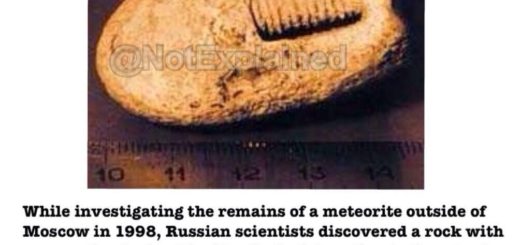New ‘Einstein Ring’ – A Rare Image Of A Distant Galaxy – Discovered

– An international team of astronomers from Spain, Italy and the USA have found a new Einstein Ring, a rare image of a distant galaxy lensed by gravity, which are mostly observed with the Hubble Space Telescope or with radio telescopes.
On Hubble Space Telescope’s website we read that:
‘Eienstein rings’ and are perhaps the most elegant manifestations of the gravitational lensing phenomena. Gravitational lensing occurs when the gravitational field from a massive object warps space and deflects light from a distant object behind it, allowing the distant object to be seen.
Einstein rings are produced when two galaxies are almost perfectly aligned, one behind the other, giving an image like this with a reddish-white elliptical galaxy in the foreground and a thin ring of blue surrounding it — which is in fact the distorted light from another galaxy twice as far away…’
The ‘Einstein’s Ring’ is one of countless phenomena in the Universe and it was predicted by Einstein’s general theory of relativity.
(Another ‘Einstein Ring’ – look here)
The rings are still rather rare and usually appear as small features in the sky, which are hard to see clearly.
Astronomers first observed this effect by measuring the position of stars near the Sun during the 1919 total solar eclipse
This new ‘Einstein ring’ was discovered accidentally by Margherita Bettinelli, a PhD student from the University of La Laguna in the Canary Islands, who was analyzing a series of archive images from the at the Cerro Tololo Observatory in Chile.
The ring is located in the direction of the constellation of Sculptor in the southern sky.
Light arriving at the Earth today left the Einstein ring 8 billion years ago, so we see the ring as it was 5 billion years after the Big Bang. Despite its relatively small apparent size (it stretches across an angle on the sky of 4.5 arcseconds or about 1/800th of a degree), it is larger than most of the other rings found to date.
Follow up work with the 10.4-m Gran Telescopio Canarias (GTC) confirms its distance and shows that the intervening lens galaxy has a mass equivalent to around a trillion (million million) Suns.
The scientists, from Spain, Italy and the USA, report their discovery in Monthly Notices of the Royal Astronomical Society.



 Creators of mankind
Creators of mankind Description of “Tall white aliens”
Description of “Tall white aliens” Where they came from?
Where they came from? About hostile civilizations
About hostile civilizations The war for the Earth
The war for the Earth “Tall white aliens” about eternal life
“Tall white aliens” about eternal life Video: “Nordic aliens”
Video: “Nordic aliens” Aliens
Aliens Alien encounters
Alien encounters The aliens base
The aliens base UFO
UFO Technology UFO
Technology UFO Underground civilization
Underground civilization Ancient alien artifacts
Ancient alien artifacts Military and UFO
Military and UFO Mysteries and hypotheses
Mysteries and hypotheses Scientific facts
Scientific facts


















